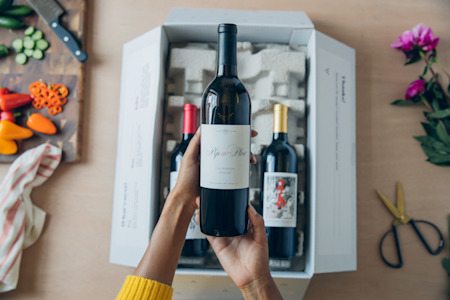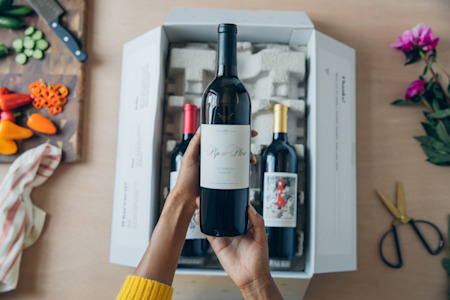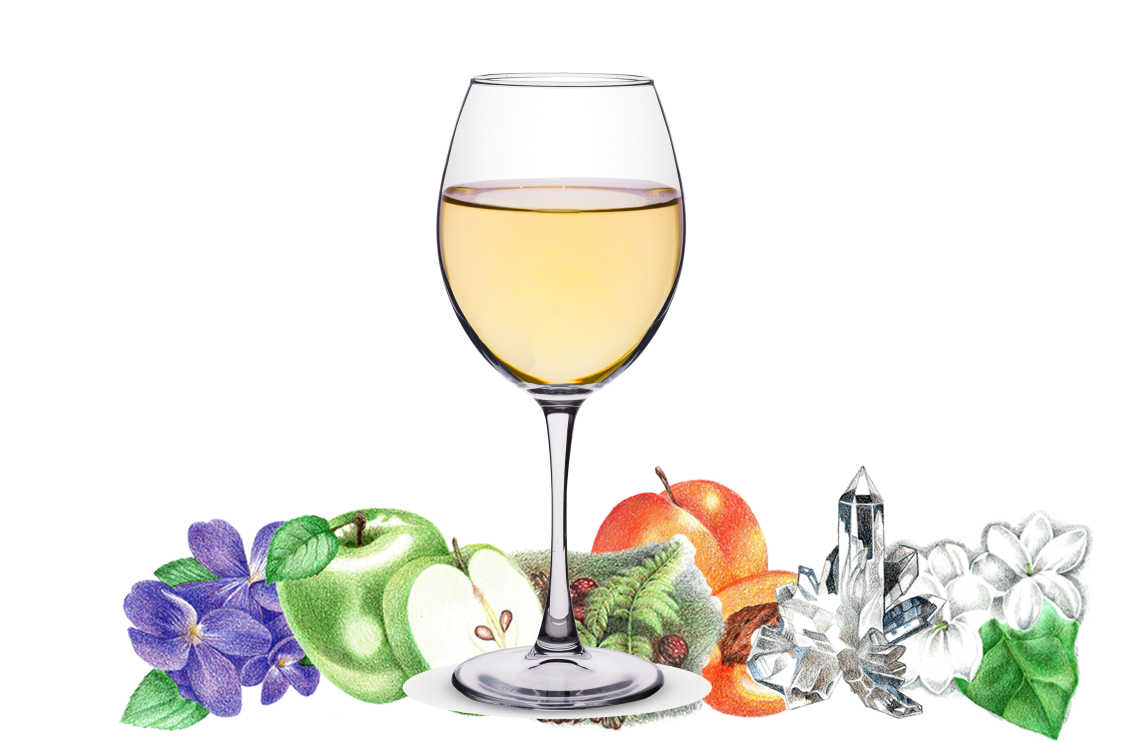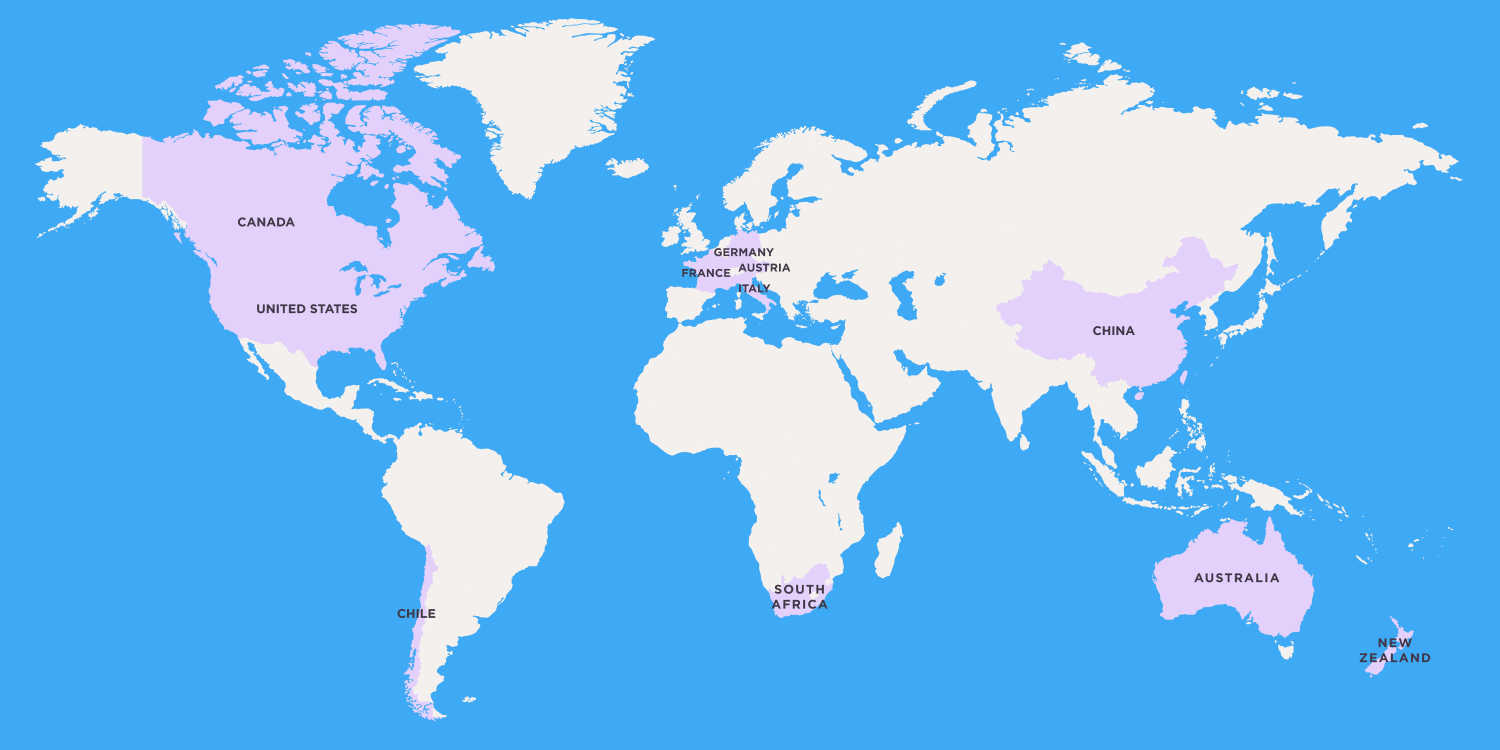Riesling
Riesling is a white grape that is expressive, complex, and shows terroir terrifically.
Riesling is a white wine grape that is unfairly maligned. It's expressive, it's complex, and it shows terroir terrifically. The Riesling grape is versatile. It makes bone dry white wines with high acidity as easily as it makes late-harvest sweet wines. It truly is one of the great wines of the world.
Its home is in Germany, but elegant versions can be found in cool-climate wine regions across the globe. Maybe the reason that it's so unknown is that it's tricky to grow well. It's a grape that takes a lot of work and isn't easily mass-produced.
Riesling wines are typically found as single varietals, but it is not uncommon to see Riesling added to a blend to help round out textures and flavors.

Take The Quiz
Learning about different wine varietals and regions is fun. Take the quiz now to explore wines matched to your unique palate.
Take The QuizIN THIS ARTICLE:
Want personalized wines?
Get your first box of wines for $44.95 + free shipping.

Riesling Terms and Sweetness Scale
The confusing German terms that surround Riesling are a barrier to entry for many wine drinkers. What do they mean? Is all Riesling sweet?
The answer is no, but with such high acidity, it makes a memorable and oftentimes delicious sweet wine.
There are a few give-away terms that will help you understand what the wine will taste like: Trocken (dry Riesling) or Halb-Trocken (half-dry Riesling) wines.
These can come in conjunction with a few other terms: Kabinett (main harvest grapes, made like most other white wines), Spätlese "late harvest", and Auslese "select harvest". These indicate when a wine was picked and the corresponding quality, with the later the harvest the better the final wine. These can all be bone dry, but often times have a touch of sweetness.
There are multiple ways to make a sweet wine, but the best results come from grapes that have been allowed to hang on the vine late in the season to encourage "noble rot." This process (sometimes referred to by its scientific name Botrytis cinerea) raisins the grapes on the vine, preserving the sugars and the acidity, but removing water.
These sweet, late harvest wines have two more terms to pay attention to: Beerenauslese (selected berries that are even more concentrated) and Trockenbeerenauslese (very rare and the most prized of the sweet Rieslings).
The only wine that presents more sweetness than a Trockenbeerenauslese is Eiswein (Ice Wine), where producers wait until the grapes freeze in the vineyards and then harvest and press while the grapes are frozen. These wines are ultra-concentrated and rich with no excess water left in the grapes.
History of Riesling
Riesling evolved from a native German grape around the Rhine. It wasn't until the 1430s that what we know as Riesling was referenced in official documents, and even then it was under the name "Riesslingen." Soon thereafter official records show the grape appearing in Alsace and across middle-Europe.
By the mid-1500s it was documented as growing in the Mosel, all over the Rhine, and in the city of Worms. Even at that early juncture producers knew that it was a luxurious, and high-quality grape.
The biggest development was when it was planted at Schloss Johannisberg in the Rheingau in the early 1700s as single varietal vineyards. Singe varietal plantings were radical at the time.
Fun Fact
For centuries Riesling growers were taxed at a higher rate than other winemakers. (The people in charge knew how delicious good Riesling was)! As soon as the tax was removed the grape took over the Mosel Valley and the rest of Germany.
By the 1850s it was in South Australia, California, and even Washington State. Riesling thrived until the rise of Chardonnay in the 1960s and 1970s, when many of the vines were ripped out to plant the much more easily cultivated Chardonnay grape.
To compete, many industrial winemakers turned to using too much sugar and too much alcohol, making wines that showed no terroir and no redeemable flavors. Thankfully much of this is behind us, and fantastic Riesling is being made in many places for wine lovers to enjoy.
What does Riesling taste like?
Riesling is a grape that can taste of almost anything. From fruit flavors to rocks to gasoline, Riesling (much like Pinot Noir) is influenced by the terroir it was grown in. In well-made examples, minerality is always a component of the wine.
For example, Riesling growing in two very close parts of Germany exhibit incredibly different characteristics. Nahe Riesling is known for red slate flavors whereas the Mosel Riesling is known for blue slate flavors. This small example does a great job of showcasing the nuances of terroir that Riesling can exhibit.
It is best unoaked to showcase its fruit flavors. Notes of orchard fruit, citrus, smoke, white peach, slate, earth, flowers, and green apple are common in young versions of the wine.
One tasting note that isn't generally used to describe other wines is "petrol" or in technical-speak: Trimethyl Dihydronapthalene ("TDN"). If you are tasting an older Riesling know that gasoline flavors are not a sign of a bad wine, but of a well-aged bottle.
In Rieslings that have undergone Noble Rot there are often notes of honey and apricot.
Riesling Characteristics
This white grape variety is known for its ability to express terroir and its ripe acidity. Many of the flavors present in the wine are dependent on the ripeness when harvested. It is choosy about where to grow, and does best in sandy clay and well-drained loam soils. If the grapes are over-abundant they can lose flavor, and the best examples come from low-yield vineyards. It likes hillsides more than the floor of a valley.
The ideal Riesling climate is sheltered and sunny fields in cool climates, with long ripening seasons. The warmer the climate, the thicker the skin. It is hearty and can stand up to the cold. This is why many winemakers in Canada choose it for ice wines.
Riesling Nutritional Facts
The nutritional value in Riesling varies greatly depending on two main factors: alcohol and sugar. The more sugar present in a wine, the more carbohydrates. Sweetness in Riesling is very specifically defined, see the information in the above section.
The alcohol in Riesling varies depending on how ripe the grapes were when harvested, if the winemaker added extra sugar, and how long it was allowed to ferment. Riesling wines range all over the spectrum and should be taken on a case to case basis.
How to Serve and Store Riesling
Well made, high-acid Riesling that has been stored correctly can age almost indefinitely (decades and decades). The general rule of thumb is that Riesling wines last 5–15 years if dry, 10–20 years if semi-sweet, and 10-30+ if fully sweet. Although the regional styles have a large influence on the amount of time needed in the cellar.
General Alsatian Riesling only needs a few years, but Alsatian Riesling that is designated as "Grand Cru" needs at least five, if not ten years in the cellar.
That being said, like other wines most Riesling is meant to be enjoyed fresh and should not be aged.
Serving Riesling can be done simply. The wine should be chilled, beginning at cellar temperature. If you want to experience the wine through multiple stages we recommend popping your wine in the refrigerator an hour before serving and tasting as it warms in your glass, but this is all personal preference. Enjoy your wine how you like it.
To open you will need a traditional corkscrew, or if dealing with an old bottle you might need a two-pronged Ah-so or "Butler's Thief" wine opener.
If you are storing Riesling, it should be in a cool place that does not receive direct sunlight, and preferably in a wine refrigerator or cellar. 55 degrees Fahrenheit is the median temperature wine should be stored if you wish to age the bottles. What matters most is consistency. Do not store your Riesling in a place that receives direct sunlight, heat, or too much humidity and remember to enjoy it while it's fresh.
What to Pair with Riesling
Pairing wine has some general rules, but we think the most important rule is to drink Riesling with the food you like. Riesling is a good choice for enjoying on its own as an aperitif before dinner, but if you are pairing we would recommend drinking it with rich red meats and roasted vegetables. It also works well with pork, game birds, and Thai or other Asian spices.
Riesling Wine Regions Around the World
Riesling is truly an international grape and grows all over the winemaking world. The styles vary greatly by region and by producer. Here is a brief overview of where it is growing, and broad tasting notes associated with each region.
Germany:
Riesling defines German wine, and German Riesling is all about acidity and poise. Learning the difference in styles of acidity takes time but is well worth the effort. When the wines are allowed to remain on the vine late in the season they develop a honeyed, concentrated flavor.
The loss of popularity in the grape has actually resulted in better winemaking with drier and more well-balanced examples coming from the Pfalz, Nahe, Rheingau, the Mosel Valley and the Rheinhessen regions.
It is even used in sparkling wines called "Deutscher Sekt."
France:
In Alsace Riesling grows more on the valley floors which have to be tightly controlled. It is used for vendange tardive" or "late harvest" wines in the region, and it is one of the few grapes allowed on Grand Crus sites.
Austria:
Austrian Riesling is firmly mineral, and Riesling vines are grown on all the best spots in Austria. Almost all of the examples from the country are dry with the best coming from Wachau.
Fun Fact
Luxembourg grows Riesling!
United States:
Riesling has enjoyed waves of popularity in the United States, but today we find great examples of the wine coming from Washington State, Oregon, California, and even New York.
New York's Finger Lakes region is producing incredibly interesting examples of the wine.
Australia:
Australia experienced a boom for Riesling in the 1950s and 1960s, but today the best examples can be found in the Eden Valley and Clare Valley. Clare Valley Rieslings will develop with age whereas Eden Valley wines are more beguilingly scented from the beginning and can be enjoyed young.
Riesling growing elsewhere:
There are good examples coming from New Zealand, and as with many other wines in the country, Marlborough is the leading region.
Canada is a major producer of ice wine using Riesling.
Around the world good examples can also be found in Chile, South Africa, and even China!

Take Our Quiz Today
Get award-winning delicious wines from all over the world shipped straight to your door. Take the quiz to get the perfect pairings for your holiday season.
Take The Quiz TodayIN THIS ARTICLE
Want personalized wines?
Get your first box of wines for $44.95 + free shipping.


WinePrint™ by Firstleaf
Are you looking to learn more about your wine preferences? Check out our Wine Print for an in-depth look at your personal tasting profile. Discover your favorite wines, varietals, regions, and tasting notes and get personalized recommendations wherever you are.
Learn More
